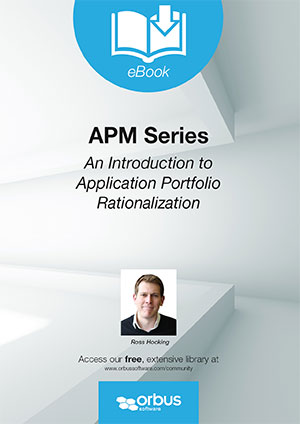What is Application Portfolio Rationalization (APR)? This eBook covers some common reasons why organizations need to rationalize their portfolio.
The accumulation of applications is a major challenge for most organizations today, in fact 85% of CIO’s believe their application portfolio needs to be rationalized [1]. This statistic may seem surprising, but decommissioning an application is often a time consuming and expensive process. This may include steps such as extracting data, finding an acceptable way to store / manage the data, often in a new system and managing support and maintenance contracts for both the systems receiving the data and the one being decommissioned [2]. Considering this challenge, and others such as resistance to change from the user community, doing nothing may seem like the easiest decision.
So why do so many CIO’s see a need to rationalize their application portfolio if it is such a challenge? Primarily the reason is cost. Cost in terms of operational such as hosting, support and maintenance, along with the internal cost of application management. Where an organization has multiple systems performing the same function, or worse - systems which aren’t even used, spending money on these systems is waste and a great opportunity to reduce cost without reducing productivity.
This white paper aims to help readers to understand not just what Application Portfolio Rationalization (APR) is, but also some common reasons why organizations need to rationalize their portfolio. Also discussed are some popular approaches to rationalization, to help understand the process an organization goes through when undertaking this activity.
As the paper will outline, APR is a challenge shared by most organizations and represents a huge opportunity for change, while potentially leveraging some new technologies such as mobile, social, cloud and big data.
Login to continue reading and download the whitepaper.
